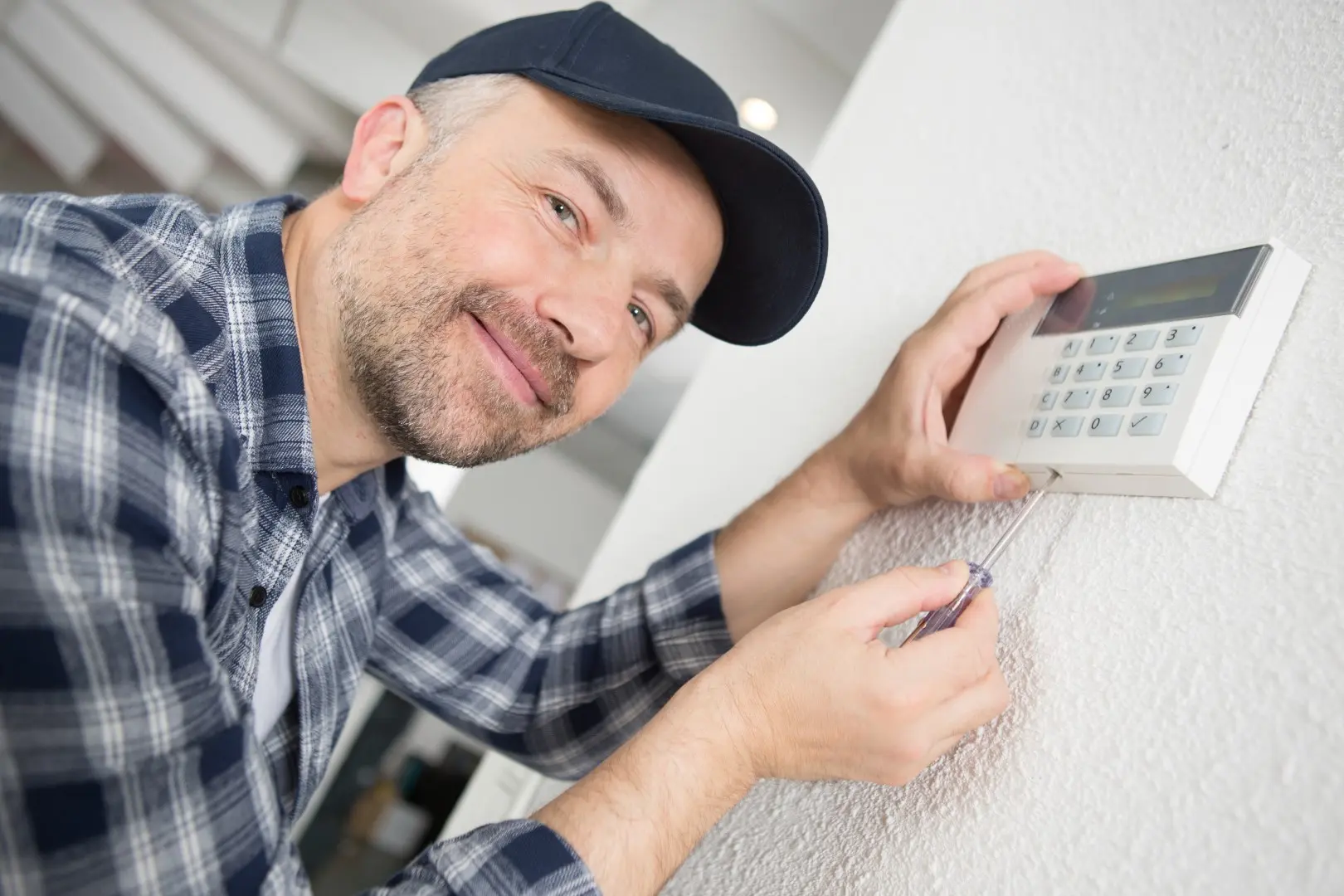Your thermostat acts as the “brain” of your HVAC system, monitoring temperatures and communicating when to heat or cool your house. As a result, a failing thermostat can quickly lead to an uncomfortable living situation and costly energy bills.
Fortunately, there are plenty of thermostat troubleshooting tips you can try to resolve the most common problems.
What are the most common thermostat problems?
The most common thermostat issues include:
- Dead or dying batteries.
- HVAC system won’t start.
- HVAC system won’t stop running.
- Short cycles (HVAC turns off and on too often).
- Temperature is incorrect.
- Thermostat forgets temperature settings.
- Thermostat is unresponsive.
- Thermostat won’t power on.
A home warranty covers many of the typical issues you might face with your thermostat and HVAC system. If you don’t have coverage already, consider a warranty plan for your home systems. This can help you avoid unexpected repair costs for your heater, AC, and more.
What are the steps for troubleshooting a thermostat?
1. Clean it.
A thermostat is a sensitive piece of equipment. If it’s too dusty or dirty, that could affect its performance and functionality. Fortunately, cleaning your thermostat is easy. In most cases, you can simply dust it using a soft brush or compressed air.
Remember: Obstructions can affect your thermostat’s performance. Make sure nothing is blocking it. You should never place furniture or other objects in front of your thermostat.
2. Reset it.
If you have a digital thermostat, you can likely reset it yourself. This may solve your problem in a few short minutes.
Resetting a thermostat is much like rebooting a computer when you’re having a problem. It allows it to regain its bearings and start fresh.
Naturally, the steps for resetting a thermostat vary from model to model. Some units have a small button you can press using a paper clip. Others, such as Nest and Honeywell thermostats, require you to press and hold buttons for an extended period of time.
Older mechanical thermostats may even require you to flip a circuit breaker to reset it. Check your circuit breaker box for the breaker dedicated to your HVAC system.
If you don’t have the manual handy, figure out which model you have and find its manual online. The best place to check is the manufacturer’s website. We’ve linked to these pages for a few of the most popular thermostat brands below.
- Carrier Product Literature
- ecobee Document Downloads
- Emerson Thermostat Manuals
- Honeywell Thermostat User Guides
- Lennox Product Literature
- Nest Document Downloads
2. Replace the batteries.
Many modern digital thermostats need batteries. While the type of batteries depends on your model, this is one of quickest, easiest troubleshooting steps.
Most thermostats that need batteries will indicate when they need replacement. However, if your thermostat doesn’t seem to work properly, try replacing the batteries anyway.
In most cases, it’s as easy as popping your thermostat off the wall, removing the old batteries, and swapping them out for new ones.
Note that the steps for removing your thermostat from the wall and replacing the batteries can differ from model to model. In some instances, you may need a screwdriver to open the battery compartment.
3. Check for a tripped circuit breaker.
If your thermostat isn’t functioning, it’s possible a circuit breaker tripped. When this happens, you need to locate your home’s breaker box and check for any flipped switches. If one is flipped, push it all the way off. Then, turn it back on again.
In most cases, there should be a key indicating which breaker corresponds with your thermostat. This key is often printed on the inside door of the breaker box. Checking this first may save you some time.
4. Inspect the wiring.
All thermostats have wiring that connect them to the rest of the system. Remove the thermostat cover or pull the unit from the wall. If you notice wiring damage, call a professional for a repair.
Look out for loose wires, corrosion, and wires that have been completely disconnected.
How do you know if your thermostat is bad?
If your thermostat has gone bad, it may be completely unresponsive. A broken thermostat may not power on. Alternatively, it could struggle to communicate with the rest of your HVAC system.
If your home temperatures don’t match your thermostat, that’s another sign it could need replacement.
Other indicators of a bad thermostat include your heating or air conditioning running constantly. If your heater or air conditioner won’t shut off and troubleshooting doesn’t solve the issue, it may be time for a new thermostat.
Thermostats have an average lifespan of roughly 10 years, although many will last longer. Even so, these problems can crop up at any time, even with a properly maintained system. The best thing you can do for you and your house is to invest in a home warranty.
How can a home warranty help with a faulty thermostat?

Beyond basic troubleshooting you can do yourself, nothing beats expert help. An HVAC professional can quickly and accurately diagnose the problems you’re having with your system. However, this comes with a cost, and these services can be expensive.
Fortunately, a home warranty plan reduces these costs to a modest day-of-service fee. If your heating or cooling system has home warranty coverage and there’s a problem, submit your claim.
We’ll connect you with a technician from our network and get your system back on its feet for a fraction of the usual repair or replacement cost.
If you don’t already have a home warranty, getting your quote is completely free. Reach out today to see how we can help shield your home and your wallet.
You can also call us anytime at 800-670-8931.
There’s more to your HVAC system than just your thermostat. Check out these related guides!

